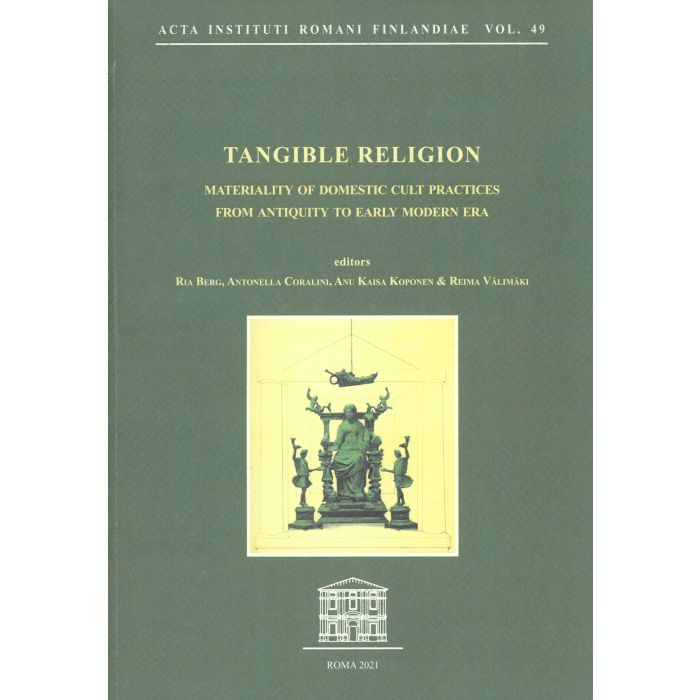We use cookies to make your experience better. To comply with the new e-Privacy directive, we need to ask for your consent to set the cookies. Learn more.
Tangible Religion
€40.00
In stock
SKU
978-88-5491-164-2
Tangible Religion. Materiality Of Domestic Cult Practices from Antiquity to Early Modern Era
Ed. Ria Berg, Antonella Coralini, Anu Kaisa Koponen and Reima Välimäki
Säätiö Institutum Romanum Finlandiae - Stiftelsen Institutum Romanum Finlandiae
Acta Instituti Romani Finlandiae 49
Roma 2021, 281 s.
Ed. Ria Berg, Antonella Coralini, Anu Kaisa Koponen and Reima Välimäki
Säätiö Institutum Romanum Finlandiae - Stiftelsen Institutum Romanum Finlandiae
Acta Instituti Romani Finlandiae 49
Roma 2021, 281 s.
Part of the introduction:
“In ancient and premodern societies from archaic Greece and imperial Rome, through the Middle Ages up to Reformed Northern Europe - most homes contained at least some select objects with a religious or ritual significance. Such objects, with a variable degree of sacrality, would range from altars, household shrines, and statuettes of divinities to incense burners, relics, pendants, rosaries and religious imagery of gods and saints represented on wall paintings, decorative tiles, textiles, furniture or everyday utensils, and even substances contained in the 'consecrated' vases, such as incense, salt, honey, water and wine. Such objects differed from the most venerated sacred cult items safeguarded in temples and churches, and seen only during certain ceremonies: domestic cult objects may have been seen, touched and used on an every-day basis. Inhabitants, visitors, servants, and slaves of the households therefore had a close, physical - and arguably more direct, personal and emotive - relationship with these objects with which they shared the living space and with which they were in daily interaction, than with the objects of the official cult. In domestic space, holy and everyday activities and objects mingled and were closely interwoven, to such an extent that it is impossible to distinguish the borders between the 'sacred' and the 'profane'.”
“In ancient and premodern societies from archaic Greece and imperial Rome, through the Middle Ages up to Reformed Northern Europe - most homes contained at least some select objects with a religious or ritual significance. Such objects, with a variable degree of sacrality, would range from altars, household shrines, and statuettes of divinities to incense burners, relics, pendants, rosaries and religious imagery of gods and saints represented on wall paintings, decorative tiles, textiles, furniture or everyday utensils, and even substances contained in the 'consecrated' vases, such as incense, salt, honey, water and wine. Such objects differed from the most venerated sacred cult items safeguarded in temples and churches, and seen only during certain ceremonies: domestic cult objects may have been seen, touched and used on an every-day basis. Inhabitants, visitors, servants, and slaves of the households therefore had a close, physical - and arguably more direct, personal and emotive - relationship with these objects with which they shared the living space and with which they were in daily interaction, than with the objects of the official cult. In domestic space, holy and everyday activities and objects mingled and were closely interwoven, to such an extent that it is impossible to distinguish the borders between the 'sacred' and the 'profane'.”
| Publisher | Foundation Institutum Romanum Finlandiae |
|---|---|
| ISBN | 978-88-5491-164-2 |
| ISSN | 0538-2270 |
| Series | Acta Instituti Romani Finlandiae |
| Sarjanro | 49 |
| Published (year) | 2021 |
| Cover | Softcover |
| Type of Binding | Softcover binding |
| Languages | english |
| Disciplines | Classical Studies |


